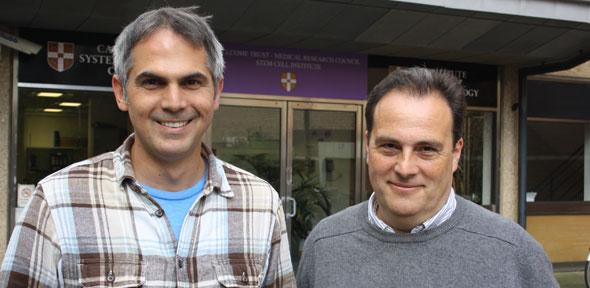
Submitted by Administrator on Mon, 28/11/2016 - 16:12
As part of the month-long focus on research on stem cells, SCI Researchers Kevin Chalut and Ben Simons bring their perspective as physicists to the spotlight.
One of the many mysteries surrounding stem cells is how the constantly regenerating cells in adults, such as those in skin, are able to achieve the delicate balance between self-renewal and differentiation – in other words, both maintaining their numbers and producing cells that are more specialised to replace those that are used up or damaged. “What all of us want to understand is how stem cells decide to make and maintain a body plan,” said Dr Kevin Chalut, a Cambridge physicist who moved his lab to the University’s Wellcome Trust-MRC Cambridge Stem Cell Institute two years ago. “How do they decide whether they’re going to differentiate or stay a stem cell in order to replenish tissue? We have discovered a lot about stem cells, but at this point nobody can tell you exactly how they maintain that balance.”
To unravel this mystery, both Chalut and another physicist, Professor Ben Simons, are bringing a fresh perspective to the biologists’ work. Looking at problems through the lens of a physicist helps them untangle many of the complex datasets associated with stem cell research. It also, they say, makes them unafraid to ask questions that some biologists might consider ‘heretical’, such as whether a few simple rules describe stem cells. “As physicists, we’re very used to the idea that complex systems have emergent behaviour that may be described by simple rules,” explained Simons. What they have discovered is challenging some of the basic assumptions we have about stem cells.
Read more: Cambridge Research

